Submitted by WA Contents
David Chipperfield Architects completes masterplan for Royal Academy of Arts in London
United Kingdom Architecture News - Jun 25, 2018 - 05:03 19383 views
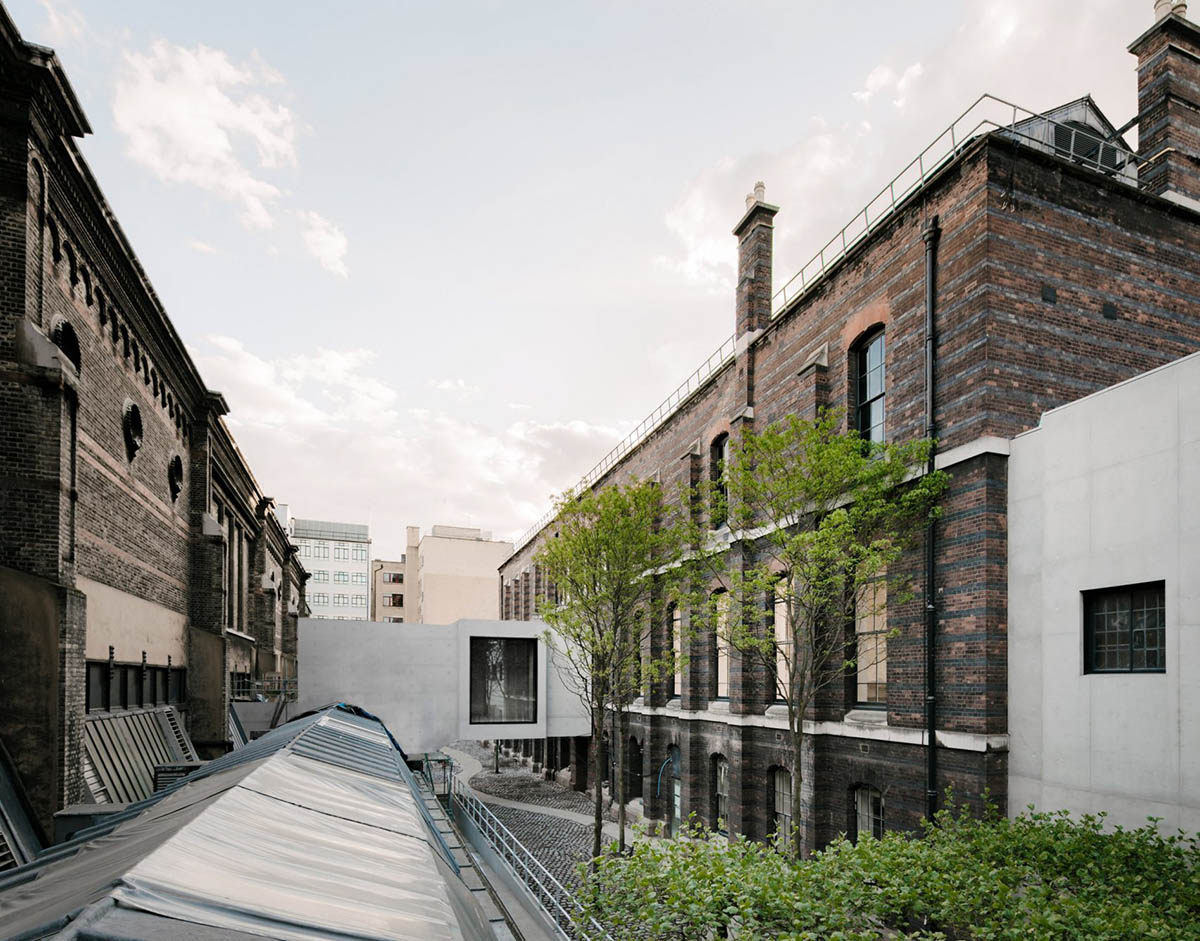
David Chipperfield Architects has completed the new masterplan for the Royal Academy of Arts (RA) in London, connecting the Burlington House and Burlington Gardens sites with a series of interventions based on the institution's ideological terms.
To celebrate its 250th anniversary, the Royal Academy of Arts has opened its major campus on June 19, 2018 to the public. Chipperfield's design scheme significantly expanded its space while connecting Piccadilly to Burlington Gardenson an urban level, with a cultural programme.

The Royal Academy of Arts (RA) was founded in 1768, and is known as the oldest arts institution of Britain. Since 1868 it has been based in Burlington House on Piccadilly, in central London. In 1998, the RA acquired 6 Burlington Gardens, an Italianate building of comparable size located immediately to the north of Burlington House and oriented in the opposite direction.
Originally designed in the 1860s as the Senate House for the University of London, 6 Burlington Gardens had been modified over the years.
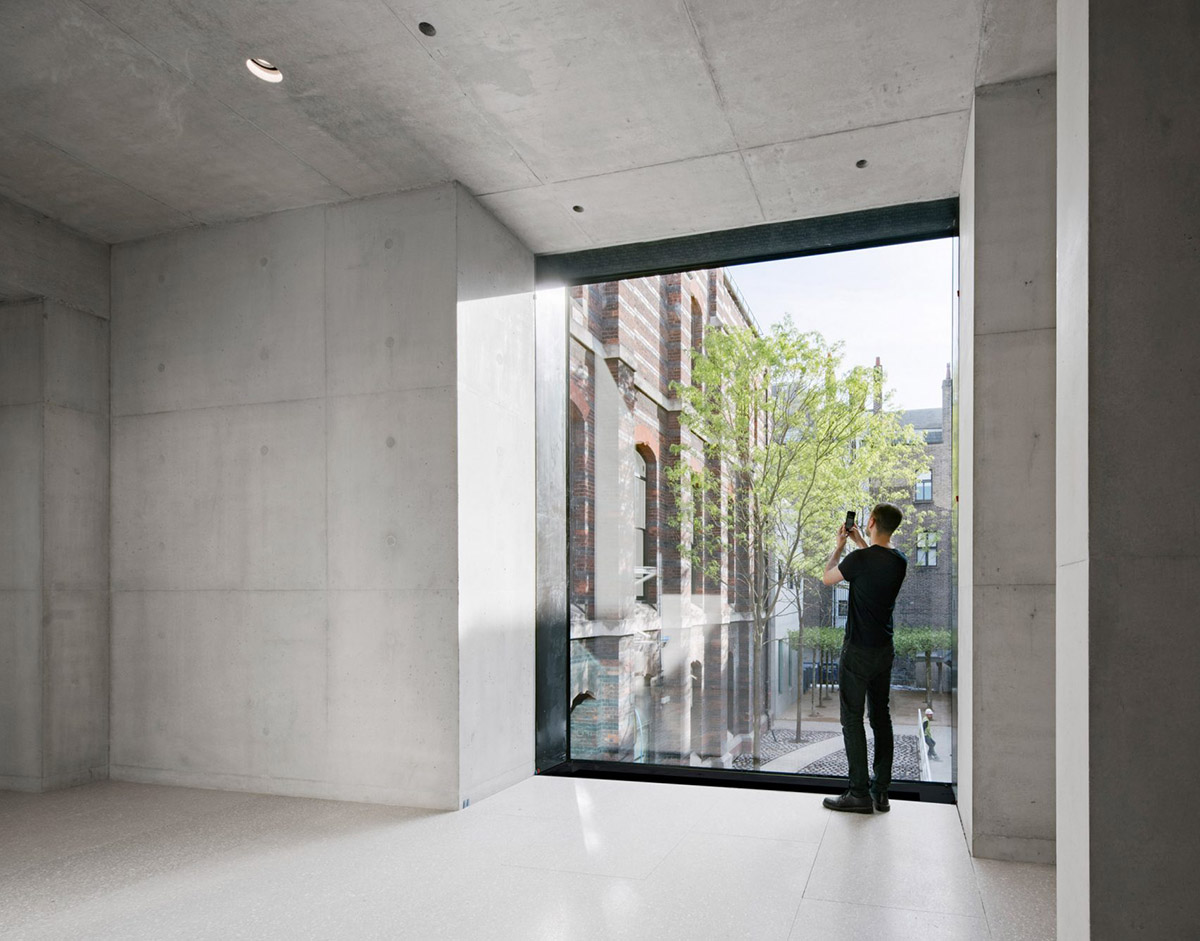
British architect David Chipperfield first unveiled plans in 2015, the scheme for the redevelopment of its two historic buildings was presented at a press conference and the construction work began at the end of October in 2015.
The architect's masterplan involved connecting the Burlington House and Burlington Gardens sites in both physical and ideological terms.
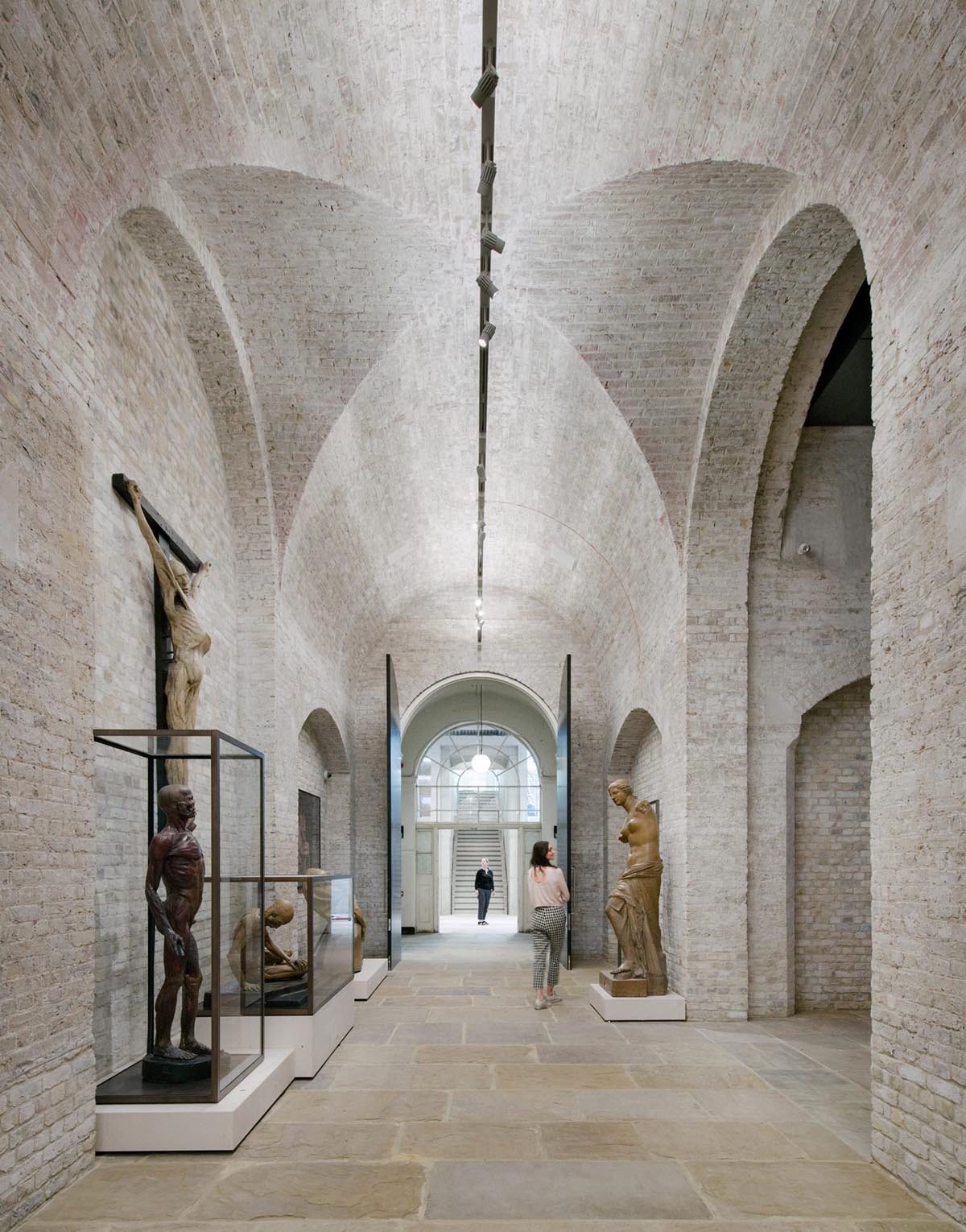
By setting a new programme for 6 Burlington Gardens and giving a coherence to the entire complex, the masterplan refurbished the existing building structures by opening previously closed off areas while introducing a series of punctual interventions that range from repair and restoration to the introduction of contemporary elements, as well as promoting the refurbishment of the two Grade II* listed buildings at sites.
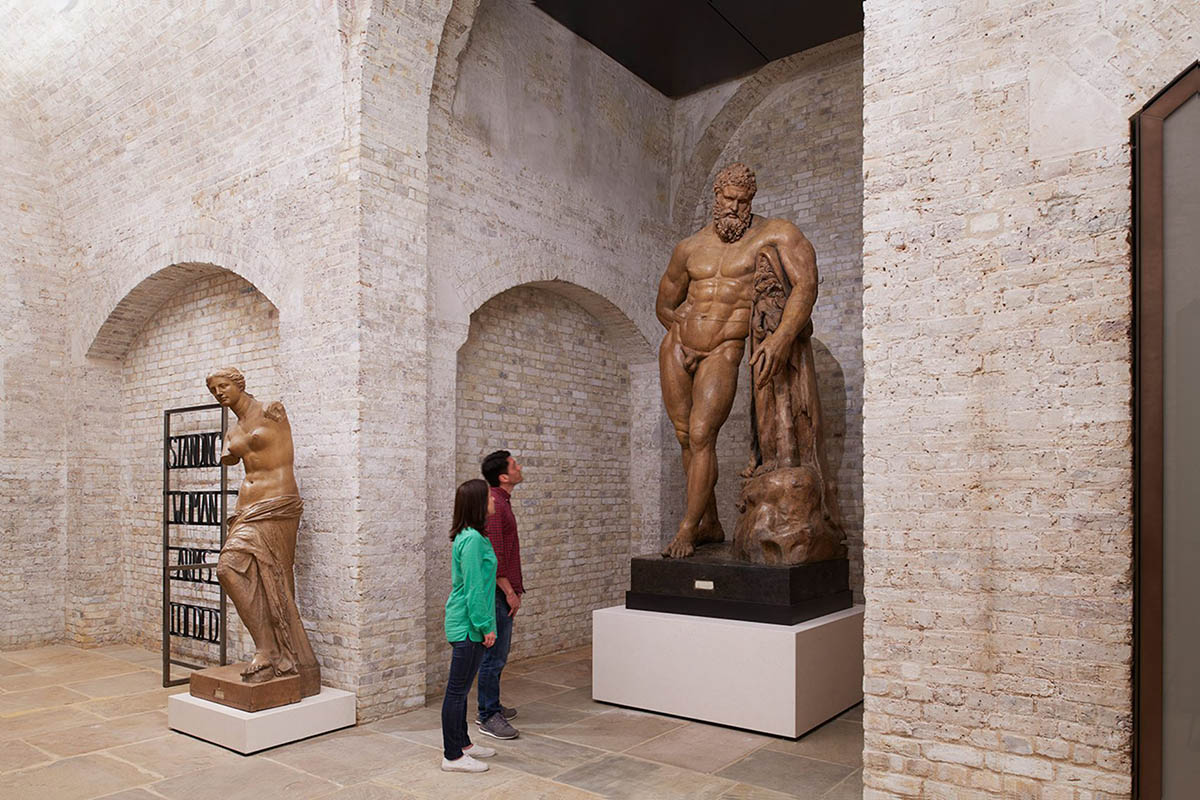
Describing a new route through the centre of the buildings, which provides a public link between Piccadilly and Burlington Gardens, this new physical route connects the main entrances of both buildings. This new route leads from a brick-vaulted corridor, previously used for storage, through to a new in-situ concrete bridge, while bisecting the RA Schools.
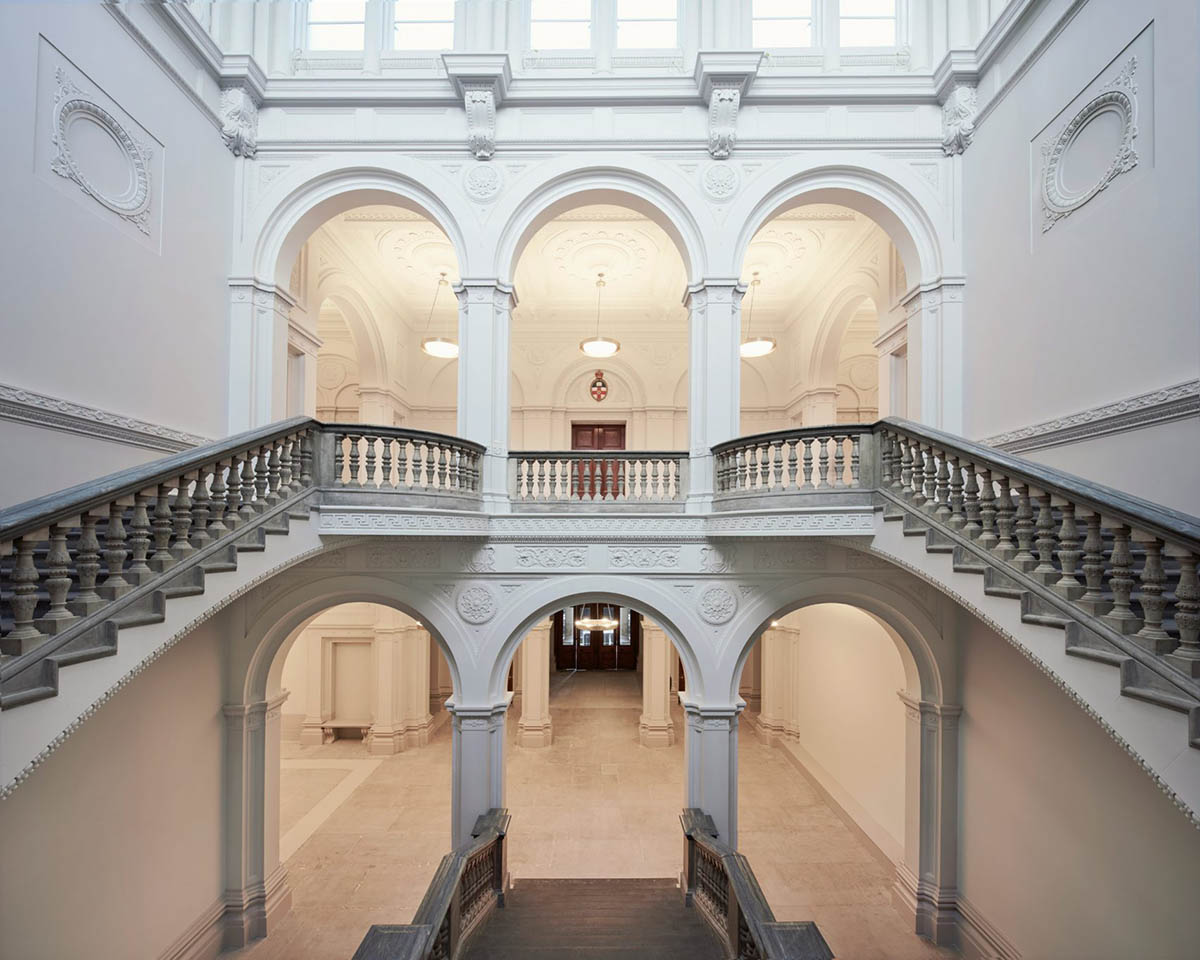
The gey-coloured bridge, housing a lift and staircase, negotiates the change of level and the differing axis of both buildings. It also overlooks a new sculpture garden for the RA Schools both exposing and integrating their activity into the campus.

"The transformation of 6 Burlington Gardens includes the reinstatement of a lecture theatre at the east end of the building. This required the removal of a floor that had been added and the relocation of the British Academy room. The new auditorium, seating 250, is semi-circular and modelled on a classical amphitheatre or scientific theatre," said David Chipperfield Architects in its project description.
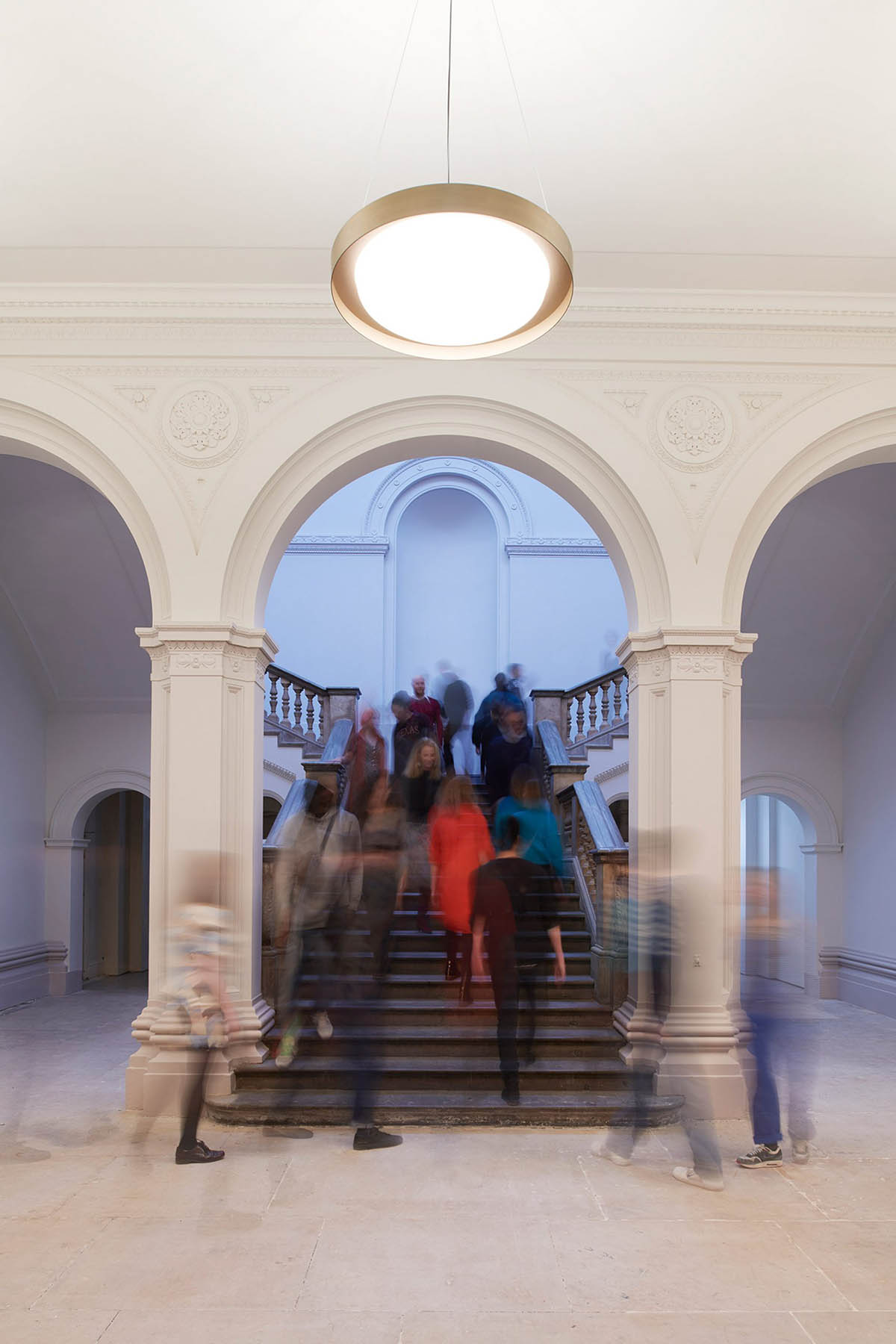
"It is entered from the top and the large clerestory windows have been fully reinstated. The former Senate Room has been restored and serves as a new cafeteria with one of the smaller committee rooms now an architecture gallery. The historic laboratory rooms have been re-aligned as an enfilade of contemporary, day-litgallery spaces."
"The large room on the west side of the building, originally a library, now serves as the Collections gallery housing Michelangelo’s Taddei Tondo. The aforementioned British Academy room is now enclosed in a new fair-faced concrete building which faces the sculpture garden and features the original windows," the studio continued.
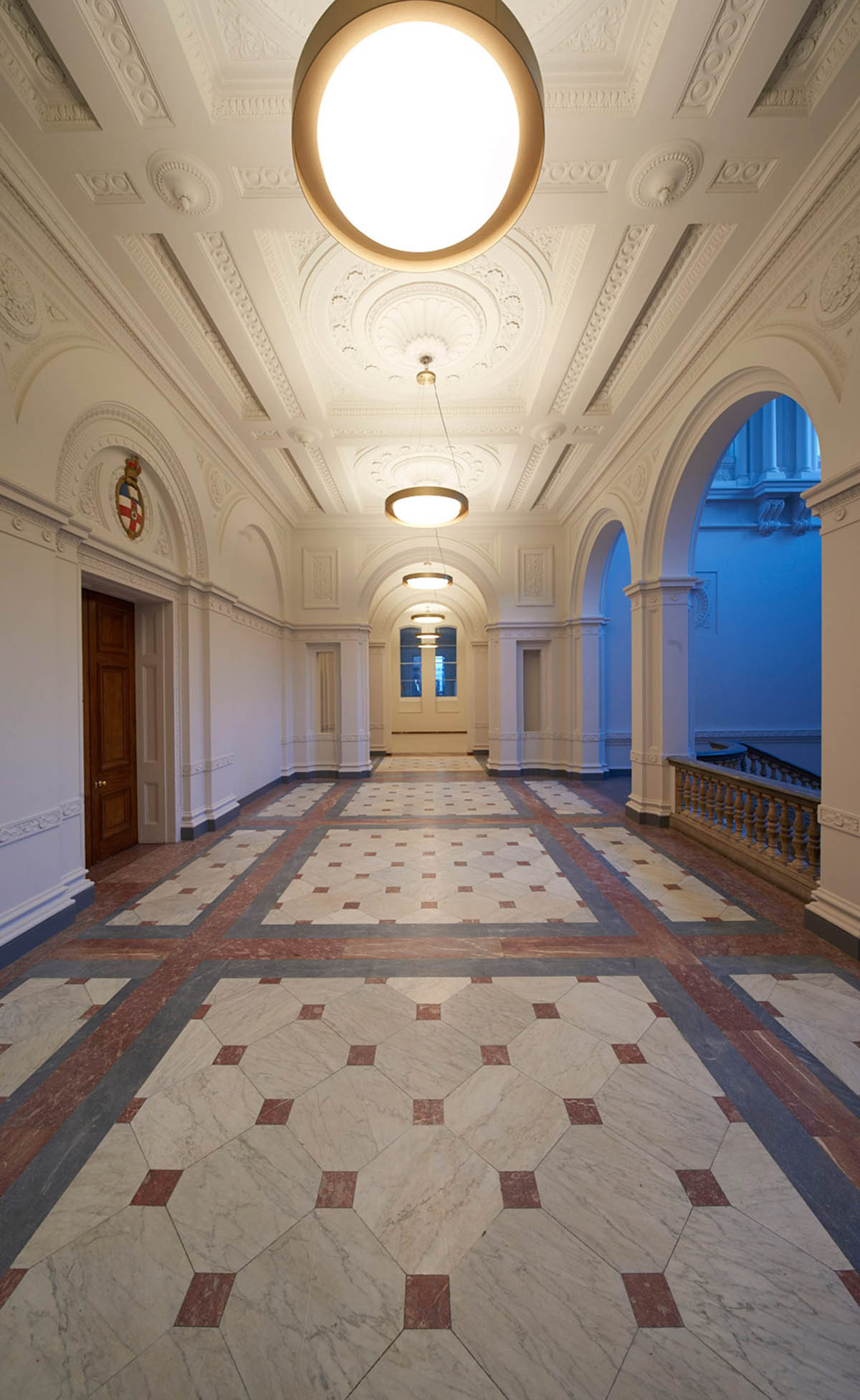
The architect created a series of small interventions in Burlington House, improving the operational running of both buildings, including art handling room, new cloakrooms, toilets and ticket offices.
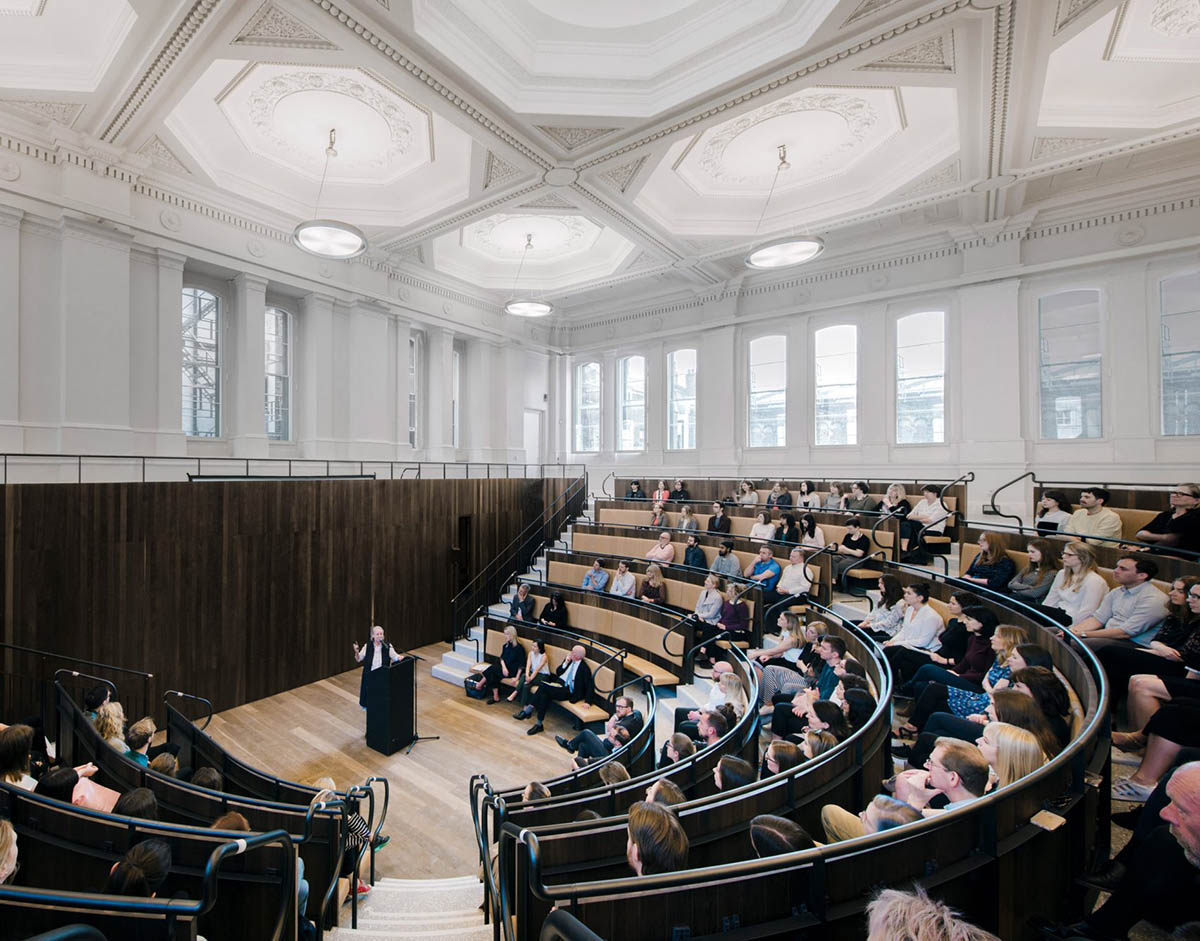
Project facts
Project dates: 2008–18
Gross floor area: 25,000m2
Client: Royal Academy of Arts
Architect: David Chipperfield Architects
Conservation architect: Julian Harrap Architects
Landscape architects: Wirtz International
Structural engineer: Alan Baxter Architects
Services: Arup
Theatre and Acoustic Consultant: Sound Space Vision
Quantity surveyor: Gardiner & Theobald
Project manager: Buro Four
Lighting: Arup
Planning consultant: Gerald Eve
Signage: John Morgan studio
All images © Simon Menges
